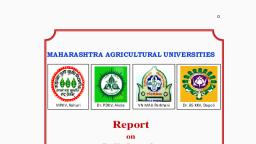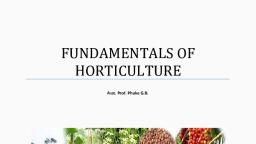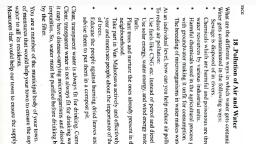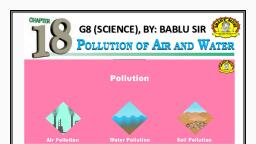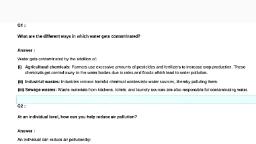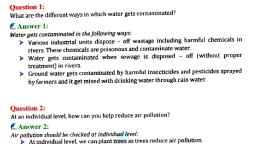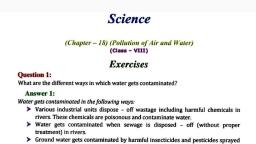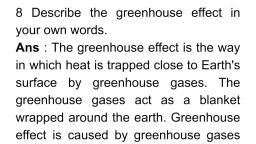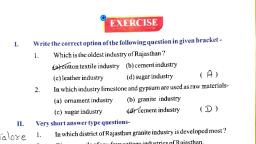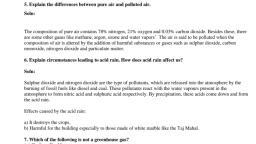Page 2 :
Course Number: ELE HORT 368, , Credit: 3(2+1), , Semester-VI, , Course title: Hi-tech Horticulture, Syllabus, , Theory, Introduction & importance; Nursery management and mechanization; micro propagation of, horticultural crops; Modern field preparation and planting methods, Protected cultivation:, advantages, controlled conditions, method and techniques, Micro irrigation systems and its, components; EC, pH based fertilizer scheduling, canopy management, high density orcharding,, Components of precision farming: Remote sensing, Geographical Information System (GIS),, Differential Geo-positioning System (DGPS), Variable Rate applicator (VRA), application of, precision farming in horticultural crops (fruits, vegetables and ornamental crops); mechanized, harvesting of produce., Practical, Types of polyhouses and shade net houses, Intercultural operations, tools and equipments, identification and application, Micro propagation, Nursery-protrays, microirrigation, EC, pH, based fertilizer scheduling, canopy management, visit to hi-tech orchard/nursery, Suggested Readings:, 1. T. A. More, Karale A. R. and Patil M.T. 2001. Hi-tech Horticulture, CAFT (Fruits),, MPKV, Rahuri., 2. Balraj Singh.2005. Protected cultivation of vegetable crops, Kalyani Publishers, New, Delhi., 3. Patil, M.T and Patil, P.V. 2004. Commercial Protected Floriculture, MPKV, Rahuri, 4. Commercial Floriculture – Prasad & Kumar., 5. Proceedings of International seminar on protected cultivation in India, held at Bangalore, (1997), 6. Greenhouse operation and management- Paul. V. Nelson, , 2, , Introduction, Scope and Importance of Hi-tech Horticulture | ELE HORT – 368 Notes Compiled and, Prepared by -Parag S. Bagul assistant professor college of agriculture, Dondaicha
Page 3 :
Introduction, Scope and Importance of Hi-tech Horticulture, , Introduction, Agriculture and allied sectors contributed 18% of the India‘s gross domestic product, (GDP). A large proportion of this contribution comes from the horticulture sub-sector. Fruits and, vegetables constitute the second largest category among agricultural crops in terms of gross, value of output (GVO) with 25% contribution. The budget outlay for horticulture increased to, 4.6% in the XII Five Year Plan to support this encouraging sector (Anonymous, 2016)., What is Hi-Tech Horticulture?, Hi-tech Horticulture is a knowledge based horticulture system which make use of, technology to increase the value and quality of farm produce., Hi-tech horticulture is a technology which is modern, less environment-dependent and, capital intensive but with a capacity to improve productivity and farmers‘ income., In the new era of changing climate, hitech horticulture has become necessity so as to, sustain productivity and economic stability of the Indian farmers., Hi-tech horticulture is useful not only for production of fruits, vegetables and flowers but, also for conservation, plant protection, post-harvest management including value-addition., Importance and Scope, The present scenario of horticulture sector in India is encouraging., In the recent era, horticulture is not merely a means of diversification but forms an, integral part of food and nutritional security and is also an essential element of economic, security., , 3, , Introduction, Scope and Importance of Hi-tech Horticulture | ELE HORT – 368 Notes Compiled and, Prepared by -Parag S. Bagul assistant professor college of agriculture, Dondaicha
Page 4 :
Due to increase in population, there is a great pressure on natural resources added with, global warming and climate change, decreasing land holdings, and high demand of quality, horticultural fresh produce., Situation demands a shift towards modern technologies of crop production., The precise production techniques for efficient use of inputs at the appropriate time and, quantity for maximization of yield and quality in different horticultural crops., It is a chain system of culturing fruits, flowers, vegetables and spices with a proper, linkage from selection of seed/variety to the finished product through the process of modern, technique of crop production through post-harvest management techniques., Hi-tech horticulture has overcome a barrier of agro-climates making most of the, vegetables and other horticultural products available to the consumers in all calendar months, although at a premium price., Technologies use, 1. Micro-propagation, 2. Integrated nutrient, water, weed and pest management, 3. Protected cultivation, 4. Organic farming, 5. Use of modern immuno-diagnostic techniques for quick detection of viral diseases, 6. Post-harvest technologies including cold chain etc., 7. Use of genetically modified (GM) crop varieties, 8. Precision Farming, 9. High Density Planting, Advantages of high-technology farming, 1. Increase in yield up to 5 to 8 times – high productivity per unit area, 2. Significant saving in key inputs like water (up to 50%), fertilizers (25%) and, pesticides., 4, , Introduction, Scope and Importance of Hi-tech Horticulture | ELE HORT – 368 Notes Compiled and, Prepared by -Parag S. Bagul assistant professor college of agriculture, Dondaicha
Page 5 :
3. Better growth and uniformity in quality, 4. Feasible even in undulating terrains, saline, water logged, sandy & hilly lands, Potential areas for Hi-tech agriculture, 1., , Urban and peri-urban areas to meet requirements of fresh produce like vegetables,, , fruits and flowers round the year, 2., , Areas with limited land and water resources, , 3., , Areas where availability of land for cultivation is restricted because of snowfall, , and where low temperature is prevalent restricting cultivation of crops under open, field conditions., 4., , Small and marginal land holdings for adopting intensive production technologies, , 5., , As an agri-business enterprise for enterprising youth in rural and urban, , peripherals, , 5, , Introduction, Scope and Importance of Hi-tech Horticulture | ELE HORT – 368 Notes Compiled and, Prepared by -Parag S. Bagul assistant professor college of agriculture, Dondaicha
Page 6 :
Hi-tech Nursery, Hi-tech nursery is a place where plants are raised from seeds/other vegetative methods, for production of new plants under protected and controlled conditions., All the operations starting from soil preparation to seedling packing are done with the use, of technical knowledge and thus they are expected to deliver good success. Since the propagules, get appropriate conditions for growth and development and the practical skill of the grower is, assured, hence seedlings / plantlets perform well in the field. Therefore, there is an urgent need, for strengthening the concept of hi-tech nursery, where propagation is done under protected, condition., Protected cultivation is intended to mean some level of control over plant microclimate to, alleviate one or more of abiotic stresses for optimum plant growth. The microclimatic parameters, are temperature, light, air composition and nature of root medium. Success in multiplication, under protected conditions increase even in unfavorable agro climatic conditions than open field, conditions. Indeed, plant multiplication particularly in greenhouse started in Indian only during, the recent past. Therefore, a vast untapped potential exists to derive benefits on a large scale., Government of India continues to support protected cultivation efforts in the country., There is a large potential for indigenous technology up gradation and appropriate human, resource development. Recently, concern about suitable disposal of plastic materials used in, protected cultivation has also been expressed. There is lack of indigenous information base on, relevant technologies for use by the prospective users and entrepreneurs. Due to control over, environmental and other factors, it is expected that the clonal propagation would be more, successful and profitable., High Quality Planting Material, Improvement of technology base and other strategies being recommended will not have, the desired impact unless high quality of planting material is not made available. By and large in, most of the cases the quality of planting material now being supplied is poor both in respect of, genetic values and health standards. There are a large number of variations within the cultivar., There is also a degeneration of varieties in certain cases. Variations are also observed in, productivity and quality amongst the trees of variety. The plants supplied by nurseryman do not, 6, , Hi-tech Nursery | ELE HORT – 368 Notes Compiled and Prepared by -Parag S. Bagul assistant professor, college of agriculture, Dondaicha
Page 7 :
turn out to be true-to-variety, what to talk the best within a variety. It is therefore necessary that, the best tree or tree of outstanding merit (TOM) within each variety be selected, earmarked and, used as mother tree for future multiplication. Competitions to be organized at village, block and, state levels to select the best trees in each commercial variety and developed as mother trees. The, growers will get incentive for their maintenance and the Government will have right to purchase, bud wood. Each state should establish a varietal foundation for stocking the parent material. The, varietal foundation will serve as mother tree resource center for the supply of limited quantity of, scion wood to government and private nurseries for mass multiplication, facilities for which to, be created in both public and private sector., Selection of Mother Plant, Selection of mother plant is to be given top priority as it decides the success of propagation, including production and productivity. The performance will depend on the source of scion, material which should be taken from the tree fulfilling all the scientific criteria for best, performance. These are:, 1. The parent plant must have been tested for its performance over a number of years., 2. It must be free from transmittable diseases and in a healthy condition., 3. The fruit shape, size and quality must conform to the typical specification of the variety., Quality Control of Planting Material, The average productivity of most horticultural crops in India is low. A wide gap exists, between obtained and potential yields with improved varieties and technologies., The following strategies are suggested for quality control., 1. Production of disease-free and quality planting material of only released and, recommended varieties/ hybrids both in public and private sectors., 2. There should be strict quality control in the production of planting material., 3. Registration act should be enforced in all the states., 4. Nursery production and maintenance should be modernized., Promotion of Hi-tech Nursery in India, Considering the immense scope and potential of hi-tech production of planting material, a, new scheme on hi-tech horticulture and precision farming has been included during the X plan., 7, , Hi-tech Nursery | ELE HORT – 368 Notes Compiled and Prepared by -Parag S. Bagul assistant professor, college of agriculture, Dondaicha
Page 8 :
A step towards promoting precision farming was taken by redesigning the Plasticulture, Development Centre (PDC) as Precision Farming Development Centre (PFDC) with a view to, introduce the concept of hi-tech horticulture. Monitoring and implementation of the scheme, would be through the National Committee on Plasticulture Application in Horticulture, (NCPAH), which is proposed to be renamed as National Council for Precision Farming (NCPF)., Presently, NCPAH has set up 18 PFDCs in various State Agricultural Universities (SAUs) and, ICAR Research Institutes. Of which one centre is at Central Institute for Subtropical Horticulture, (CISH), Lucknow. The research and developmental work carried out at CISH, Lucknow,, included production of quality horticultural produce, also in getting higher extent of success in, the production of quality planting material and that too almost throughout the year., Mechanization of Hi-tech Nursery, Hi-tech needs mechanization in nurseries, their optional use and efficiency. There is a, need for developing equipment‘s, which can pulverize, mix and sterilize root media in pot or, tray. Screw august need to be developed for filling seedling trays or pots for transplanting. Seed, sowing can be assisted by precision planters and drippers/ micro sprinklers are needed for, irrigation. Therefore, initial support for establishing such nurseries which are equipped with, modern facilities for micro irrigation, greenhouses, plant health clinics etc. are needed, in both, public and private sectors., Plastics in Nursery Management, With changing scenario in India, horticulture after liberalization is totally revolutionized., With this the demand of genuine planting/seed material has increased tremendously. Presently,, plant material is being supplied to farmers by private nurserymen and government agencies. The, signing of WTO by the Government of India, the importance of planting material would be more, pronounced. The most important segment of horticulture that has largely been benefited by use, of plastics in nursery management is starting from the use of polybags for raising seedlings/, rootstocks, a plastics strip to tie the graft union, a plastic cap for covering the mass multiplication, of grafts and mist chamber for rooting of cuttings to hardening of tissue-cultured plants., Greenhouse has revolutionized the nursery sector in different PFDCs. It has become an integral, part of nursery activities, grafts, rooting of cuttings of fruit, vegetable, ornamental, medicinal and, 8, , Hi-tech Nursery | ELE HORT – 368 Notes Compiled and Prepared by -Parag S. Bagul assistant professor, college of agriculture, Dondaicha
Page 9 :
aromatic plants. With all these advantages the efficiency of nursery has been improved, tremendously. The limitation of seasons has been overcome and enabled mass multiplication, of plants almost throughout the year. In order to take benefits of new opportunities that are, emerging in horticultural scenario, comprehensive information about various facets of, greenhouse technology especially with regard to their designing, layout and construction as per, specification using standard materials and management of temperature/ light/ humidity/drip, irrigation and nutrition for production and multiplication of various crops, obtained by, conducting location-specific research was found to be very essential., , 9, , Hi-tech Nursery | ELE HORT – 368 Notes Compiled and Prepared by -Parag S. Bagul assistant professor, college of agriculture, Dondaicha
Page 10 :
Micro propagation of Horticultural Crops, Micro propagation, Micro propagation refers to the production of plants from very small plant parts, tissues, or cells, grown aseptically in a test tube or containers under controlled nutritional, environmental, and aseptic conditions. All the biological principles of micro propagation techniques are based, on the phenomenon or totipotency of cell, which implies that a plant cell has the capacity to, generate into a full-fledged plant having different organs., The various applications of micro propagation are:, 1. Rapid rate of multiplication of a plant clonally, 2. Production of disease-free and disease resistant plants, 3. Induction of mutants and selection of mutants, 4. Production of haploids through anther culture, 5. Wide hybridization through excised embryo and ovule culture, 6. Somatic hybrids and cybrids through protoplast fusion, 7. Transformation through uptake of foreign genome, 8. Nitrogen fixation, 9. Cryopreservation of germplasm types, Advantages, 1. Production of large propagating material in shorter time, 2. Production of disease-free plants, 3. Clonal propagation of parental stock for hybrid seed production, 4. Year-around nursery production, 5. Useful in propagation of dioecious plants, 6. Breeding cycle is reduced, 7. Useful in hard-to-propagate plant species, 8. Germplasm preservation, Disadvantages, 1. Expensive and sophisticated facilities, trained personnel and specialized techniques are, required, 10, , Micro propagation of Horticultural Crops | ELE HORT – 368 Notes Compiled and Prepared by -Parag S., Bagul assistant professor college of agriculture, Dondaicha
Page 11 :
2. High cost of production results from expensive facilities and high labour inputs, 3. Contamination or insect infestation can cause high losses in a short time, 4. Higher level of somatic variation, 5. Poor establishment of the plantlets in the field, Stages of micropropagation, Micro propagation is an integrated process in which cells, tissues or organs of the, selected plants are isolated, surface sterilized and incubated in growth promoting, sterile medium, and environment to produce a large number of plants., The different stages are:, Stage 0: Selection of mother plant for explants isolation: The mother plant from which, explants has to be excised should be, a.) A certified and true to type representative of the desired species and or cultivar., b.) Healthy and free from insect pest and disease, c.) Should be quite vigorous., Stage1: Explant establishment in culture medium: During this stage the explant is cultured in, a suitable culture medium, preferably agar based media for tissue activation and multiplication., Different explants, , 12, , Micro propagation of Horticultural Crops | ELE HORT – 368 Notes Compiled and Prepared by -Parag S., Bagul assistant professor college of agriculture, Dondaicha
Page 12 :
Stage2: Proliferation and multiplication: In this stage, repeated sub-culturing is done to, encourage more proliferation, which largely depends upon the combination of growth regulators., The duration of this stage is unlimited and largely depends on the choice of propagator., Stage 3: Plant establishment and rooting: In this stage the selected plants are forced for root, formation, which can be achieved by media modification and modifying the concentration of, growth regulators. The concentration of cytokinins and sugars are reduced and concentration of, auxins and light intensity in the laboratory is increased to start with photosynthesis and other, physiological activities., Stage 4. Acclimatization or hardening: The plantlets developed in the culture tubes are, acclimatized to specific environment having a high humidity, a low light level and a constant, temperature. Besides, the roots developed in vitro are hairless and hence delicate, requiring care, during transfer from culture medium. To have better survival rate, the plantlets may be, transferred to container kept in mist chambers where relative humidity is maintained at higher, order. Once new growth is seen, the plants may be slowly transferred to outside by exposing to, increased light intensity in stages., Culture Techniques, Various culture techniques such as (i) meristem culture (ii) callus culture (iii) shoot bud, regeneration (iv) somatic embryogenesis (v) ovule culture (vi) embryo culture (vii) anther culture, and (viii) protoplast culture are employed in micropropagation., 1. Meristem culture: Meristem culture involves culture of both shoot-tip and axillary-bud. The, use of small shoot-tips comprising of the apical dome with one or two leaf primordia (0.1-0.5, mm) is the basis for the technique known as meristem-tip-culture, pioneered by Morel in the, 1950s. Meristem tip culture is now being routinely used, mainly in horticultural crops, for the, elimination of virus from infected material. Virus apparently either does not easily invade or, rapidly multiply in the young meristematic tissue. A simple nutrient medium consisting only of, salts, sucrose and vitamins is used in order to minimize the formation of callus. Gibberellic acid, is often needed to promote adequate growth and NAA may be required to stimulate root, formation., 13, , Micro propagation of Horticultural Crops | ELE HORT – 368 Notes Compiled and Prepared by -Parag S., Bagul assistant professor college of agriculture, Dondaicha
Page 13 :
2. Callus culture: A piece of sterile plant tissue with living cells is transferred to a culture, medium to induce callus proliferation. Sub-culturing is then done onto a medium with or without, altered growth regulator concentrations, ultimately resulting in the induction of adventitious, organs or embryos. In the last stage, regenerated plants are removed from in vitro culture and, slowly exposed to outer environment so that the plants can be fully autotrophic., 3. Cell culture: The cells are maintained in suspension cultures so as to produce free cells and, are then sub-cultured to regenerate complete plant from single cells. This technique is now useful, to induce variability in plant cells and to select desirable cell variants and regenerate complete, plants from these variants., 4. Embryo culture: It involves aseptic excision of the embryo and its transfer to a suitable, medium for development under optimum culture conditions. After the embryo has grown into a, plantlet in vitro, it is transferred to sterile soil or vermiculite and grown to maturity in a green, house. This technique is useful in the production of intetspecific and intergeneric hybrids which, could not be otherwise accomplished and also in overcoming embryo abortion., 5. Protoplast culture: From different sources, protoplasts (the plant without any rigid cellulose, wall but with plasma membrane only allowed to fuse to form a somatic hybrid) are cultured in, suitable media to regenerate the cell wall and are again cultured in suitable medium for, differentiation and morphogenesis., 6. Anther culture: The culture of anthers is of considerable value to breeders as it is possible to, produce haploid plants which reveal recessive alleles. These haploid plants can be used for the, production of homozygous diploids, thus avoiding generations of inbreeding. Added benefits,, such as small flowers and prolonged flowering time, might be ensured from the use of haploid, plants as they are usually smaller than their diploid counterparts and being sterile there will be no, pollinationinduced senescence. Anther culture has been used in Pelargonium spp. to eliminate, virus, in Lilium spp. to produce haploid plants and in Gerbera to obtain different flower colour., 7. Somatic embryogenesis: The greatest potential for clonal multiplication is through somatic, embryogenesis, where technically a single isolated cell can produce first an embryo, then a, complete plant. Somatic embryogenesis and plantlet regeneration has been reported in various, species of horticultural plants by using mid-rib, leaf and stem callus on modified MS basal, 14, , Micro propagation of Horticultural Crops | ELE HORT – 368 Notes Compiled and Prepared by -Parag S., Bagul assistant professor college of agriculture, Dondaicha
Page 14 :
medium supplemented with 1.0 – 2.0 mg/l 2,4-D and 0.25-0.50 mg/l BA or kinetin., , 15, , Micro propagation of Horticultural Crops | ELE HORT – 368 Notes Compiled and Prepared by -Parag S., Bagul assistant professor college of agriculture, Dondaicha
Page 15 :
High Density Planting, The high density planting (HDP) in fruit crops is one of the recent novel concepts of, increasing the productivity without affecting the quality of fruits. India is the largest producer of, fruits in the world after China. The average productivity and per capita availability of fruits in, India is, however, low as compared to many developed countries. The main reasons for low, productivity are old and senile orchards, wider spacing, low yielding varieties, poor orchard, management and inadequate technological up-gradation and adoption by the growers. Presently,, the continuing decline in the availability of cultivable land, rising energy and land costs together, with the increased demand of fruit and fruit products, have given thrust to the concept of high, density planting (HDP) in fruit crops. High density planting gives earlier production and return, per unit area, shortens juvenility, eco-friendly, provides efficient land use and better use of, resources like light, water and fertilizers, efficient pesticides application, besides, in this system, the harvesting becomes easy. Among the factors such as cultivar, rootstock, quality of planting, material and cultivation practices contribute to high yield of fruit trees, however, the number of, trees-1 is the most important factor which brings about radical increase in fruit production. The, success of this technology in most of the fruit crops is dependent on the use of methods to, control shoot growth and maximize light interception as the trees begin to bear fruit. The main, aim of HDP is to achieve the twin requisites of productivity by maintaining a balance between, vegetative and reproductive growth without impairing the plant health and fruit quality., The conceptual background of high density planting in fruit growing was pioneered in, temperate fruits and first planted at the end of the nineteen sixties in Europe, since then there is, rise in establishment of commercial high density orchards throughout the world., Definition, It refers to the maximum utilization of available space by accommodating maximum, number of fruit plants per unit area to achieve maximum production of quality fruits within short, period with low growing cost., 16, , High Density Planting | ELE HORT – 368 Notes Compiled and Prepared by -Parag S. Bagul assistant, professor college of agriculture, Dondaicha
Page 16 :
Principle of HDP, • To make the best use of vertical and horizontal space per unit time and, • To harness maximum possible returns per unit of inputs and resources., • Increased capture sunlight per unit area., • Land use efficiency., • Appropriate vegetative reproductive balance of the plants, Components of HDP, , , Planting system, , , , Canopy management, , , , Use of dwarfing rootstock/interstock, , , , Training and pruning, , , , Shoot pruning, , , , Root pruning, , , , Use of growth regulators, , Advantages of HDP, , , It induces the precocity, , , , Enhanced fruit yield and quality, , , , Low cost per unit production, , , , Enables mechanization in fruit crops, , , , Efficient use of applied and natural resources, , Disadvantages of HDP, , , In long run, it results in heavy competition for space, nutrients and water., , , , Overcrowded growth of canopy results in buildup of high humidity, reduced cross, ventilation in the orchard, which are conducive for more incidence of pests and diseases., , 17, , High Density Planting | ELE HORT – 368 Notes Compiled and Prepared by -Parag S. Bagul assistant, professor college of agriculture, Dondaicha
Page 17 :
, , The trees in close plantings soon begin to crowd each other and yields decline, , , , Efforts to breed dwarfing rootstocks that can control the growth of mature trees have, been largely unsuccessful., , , , Effective canopy management appears to be the largest barrier to success of high density, orchards., , Plant Architecture in HDP, Plants for high density should have more number of Fruiting branches and minimum, number of structural branches. These branches should be so Arranged and sized that each branch, cast minimum shade on other branches. Plant architecture is influenced by the method of, propagation, rootstock and spacing., Desirable Architecture of Temperate Fruit Plants can be developed as follows• Prevent upright growth and develop horizontal laterals., • Space small laterals along the central leader., • Develop and maintain fruiting spurs along entire branch as it develops., • Develop rigid, strong, self-supporting laterals., • Maintain fruiting branches in one position., • Develop fruiting spurs along the sides rather than top or bottom of lateral branches., Methods of HDP, High density can be achieved by close planting which in turn is made possible through, Control of tree size or planting in a system which accommodates more number of plants., Manipulation of tree vigor is an important prerequisite for success of high density planting in any, fruit crop. High density of fruit orchards is generally achieved by controlling the size of tree or, through improved planting system., Tree size can be controlled by applying different methods such as - Use of genetically, dwarf scion cultivars, Use of dwarfing rootstocks and inter stock Training and Pruning, Use of, growth retardants, Induction of viral infection, Use of incompatible rootstock, and Use of, genetically dwarf scion cultivars etc., , 18, , High Density Planting | ELE HORT – 368 Notes Compiled and Prepared by -Parag S. Bagul assistant, professor college of agriculture, Dondaicha
Page 18 :
Use of Dwarfing Rootstock, While Standard plantation on standard apple rootstocks (MM106) at 5x5 m accommodate, 400 plants/ha. The Non spur type cultivar on dwarf rootstock M9 spaced at 2 x 2 contain 2500, plants /ha. The density of Spur apple cultivar on standard rootstock MM111 at 4 x 4 m and semi, dwarf MM106 and M7 at 3x3m accommodate 1111 plants/ha., Dwarf rootstocks, Crop, Citrus, , Desirable characters, Citrangequat, Feronia and Severinia buxifolia, Trifoliate orange, Sour orange,, Citranges, Vellaikolumban(Alphonso),Olour(Himsagar, Langra), M9, M26, M27(Ultra dwarfing), Bud.9, P22 & Ottawa3, Psidium friedrichsthalianum, P. pumilum, Aneuploid-82, Zizyphus rotundifolia, Quince C, Siberian C, St Julien X, Prunus besseyi and Rubira, Pixy, Cherry, Colt and Charger, , Mango, Apple, Guava, Ber, Pear, Peach, Plum, , Use of genetically dwarf scion varieties, It is easier to establish high density orchards if the trees are naturally small. Use of, genetically dwarf cultivar offers great scope for close plantings, which have the potential for, higher yields and returns than traditional plantings., Dwarf Scion, Crop, Mango, Banana, Apple, Sapota, Papaya, Peach, , Desirable characters, Amarpalli Precocious & tend to bear regularly, Dwarf Cavendish (AAA) High yielding with dwarf stature, Spur varieties like Red Chief, Oregon Spur Bear on short stem, spurs; grow to 6070 % of standard cultivars in vigour and bear more spurs and yield more, PKM1 PKM3 Columnar tree shape Dwarf tree stature, Pusa Nanha Dwarf & tend to bear at lower height, Red heaven Dwarfing & high yielding, , Training and Pruning, Training and Pruning are effective tools in HDP and meadow orcharding by virtue of, their impact on shape and size control of the tree. Slow growing trees respond more favourably, 19, , High Density Planting | ELE HORT – 368 Notes Compiled and Prepared by -Parag S. Bagul assistant, professor college of agriculture, Dondaicha
Page 19 :
to pruning and training and can be maintained at a given size and shape without sacrificing yield., Mango, guava, litchi and most of the other fruit crops in India are evergreen and are seldom, pruned. The training begins when the tree is first planted and continues throughout its productive, life. Proper tree forms, branch angle and limb spacing in it aids in growth control. First training, is done after one growing season. Each plant is allowed to maintain single stem with upward, growth up to 60-80cm and then four scaffold branches are allowed in four directions to make the, tree frame. Thereafter, two shoot arising from each primary branch at a distance of 60-75cm, from main stem is allowed to form secondary and likewise the tertiary branches. After start of, bearing in plants, shoot arising from secondary and tertiary branches are given 15-20cm deep, pruning soon after fruit harvest. Spray of 01% urea combined with 0.2% Blitox-50 or any other, copper fungicide should be done soon after pruning. Pruning is applied to regulate crop in guava,, ber and fig, and rejuvenation of old orchards in mango. Tree size control through pruning is, limited to grape, apple and some other temperate fruits. Spindle bush raised on M9, M7 and M4, rootstocks is a promising training system for HDP., Planting Density, Enough though a small canopy with a high number of well illuminated leaves is efficient, in photosynthesis but it is very poor in light interception, which leads to low potential yield per, hectare. Light interception could be improved by increasing tree density. An optimum tree, density is the level of density which is required to facilitate optimum light distribution and, interception leading to high photosynthesis. As a result, yield per hectare is maximized. An, optimum light interception is a factor of plant form, planting density, tree arrangement, and leaf, response to light for photosynthesis. Optimum light interception can be defined as a level of light, intercepted by an orchard system above or below which, the economic yield will be reduced, Planting Geometry, Planting system is a combination of tree arrangement and plant form. Tree arrangement, in HDP system must have sufficient alleyways for movement of farm machinery. The way tree, are arranged also determines the light distribution pattern and light interception level. Single, hedge row and double hedge row system and square system having enough alley space is being, practiced in developed countries for HDP., 20, , High Density Planting | ELE HORT – 368 Notes Compiled and Prepared by -Parag S. Bagul assistant, professor college of agriculture, Dondaicha
Page 20 :
Mechanization, Another component in high density fruit planting is the system automation which, contributes to high production. One of the important farm operations that can be automated is, irrigation and fertigation. In fact, irrigation and fertigation have been identified as one of the key, factors for the success of high density orchards. Plant should not be kept under stress after, pruning therefore, assured irrigation coupled with fertigation is essential after pruning and during, fruit development in high density orchards., Use of Growth Retardant, Use of Bio-regulators can Prolong dormancy, Reduce vegetative growth, delay, Flowering, Reduce fruit drop etc. Commercially adopted Growth retardants are CCC,, Ancymidal, Paclobutrazol , B-9 (Phosphon D) and chloramquat. Paclobutrazol have gained, commercial application in crop regulation in mango. Tree size can be reduced by inducing viral, infection e.g. Citrus, apple, but not adopted commercially. In apple, virus free rootstock series, East MaIling Long Ashton (EMLA) are vigorous than their infected counterparts., Use of Incompatible Rootstocks, Use of graft incompatible scion and stock also induces dwarfness in the composite plant., It is not commercially exploited for this end. In ber, cultivars on Zizyphus rotundifolia, Z., nummularia induces dwarfness due to graft incompatibility., Planting Systems, Planting Systems aimed to achieve high assimilated production for its conversion into, economic yield. Various planting systems adopted in fruit crops are square, triangular, quincunx,, rectangular, hexagonal, hedgerow (single & double), paired planting and cluster planting. Square, and triangular systems are followed for HDP in mango, Kinnow, banana, papaya and Hedge row, system in apple and pineapple in India. Planting systems accommodating various number of, plants in cultivar starcrimson on MM109 rootstock are square (1116), paired(1480),, hedgerow(1860), cluster planting (1948) and double hedge row(2480)., , 21, , High Density Planting | ELE HORT – 368 Notes Compiled and Prepared by -Parag S. Bagul assistant, professor college of agriculture, Dondaicha
Page 21 :
High Density Planting of Guava, The Central Institute for Subtropical Horticulture, Rehmankhera, Lucknow developed, high density and meadow orchard systems of guava to increase the production as well as, productivity. Taking into account the production and productivity statistics, these technologies, are considerably better than the traditional one., Establishing High Density Orchard, Orchard establishment is a long-term investment. Ploughing the area once or twice is, suggested followed by two-three harrowings to pulverize and expose the soil completely. It can, be best done during dry season. Rectangular system of planting/layout is preferred as it facilitates, orchard operations. Planting can be done any time during the year provided irrigation facilities, are available. However, planting in December-January should be avoided as frost may cause, severe damage. The pits of about 75 x 75 x 75 cm or 50x50x50 cmor40x40x40 cm are dug as per, layout plan. After 7 to 10days, each pit is filled with soil mixed with 10to 15kg organic manure, and 500g of single superphosphate., Standard spacing for guava is 6x 6m, which accommodates277 plants ha-1.It is important, to shape the tree after planting. Spacing of the plants in the system depends on fertility of the, soil, availability of water, intensity of sunlight and wind exposure. As guava responds very well, to pruning, the following plant densities have been recommended by Central Institute for, Subtropical Horticulture, Lucknow for early, higher and quality guava production:, A. 3.0m (row to row) x 1.5m (plant to plant) accommodating 2222 plants ha-1, B. 3.0m (row to row) x3.0m (plant to plant) accommodating 1111plantsha-1, C. 6.0m (row to row) x 3.0m (plant to plant) accommodating 555plants ha-1, Canopy Management, Untrained or unpruned guava trees become huge and unmanageable after a couple years, of growth. The bearing area is reduced and the interior ofthe plant becomes entirely devoid of, fruiting. Trees are pruned to increase the yield of quality fruits by eliminating crowded and crisscross branches. Pruning begins at an early stage of plant growth to develop single trunk trees, with well-spaced scaffold branches to form the frame work. Apical growth is to be controlled, within the first year of planting for better canopy architecture. Trees are topped to a uniform, 22, , High Density Planting | ELE HORT – 368 Notes Compiled and Prepared by -Parag S. Bagul assistant, professor college of agriculture, Dondaicha
Page 22 :
height of 60 - 70 cm from the ground level, two-three months after planting to induce the, emergence of new growth below the cut point. As a result, new shoots emerge. Three to four, equally spaced shoots are retained around the stem to form the main scaffold limbs of the tree., These shoots are allowed to grow for4-5 months after topping until they attain a length of about, 40 - 50 cm. The selected shoots are further pruned to 50 per cent of their length for inducing, multiple .shoots from the buds below the cut end. Newly emerged shoots are allowed to grow up, to 40-50 cm and are pruned again for the emergence of new shoots. This is mainly done to obtain, the desired shape. The pruning operations continue during the second year after planting. After, two years, the short branches within the tree canopy produce a compact and strong structure. All, the plants are confined to a hedge shape of 2 m inter row width and 2.5m height for which, pruning is performed in January-February and May-June every year., Other essential operations such as fertilizer application, irrigation, plant protection,, harvesting etc., done as per regular scheduled., , 23, , High Density Planting | ELE HORT – 368 Notes Compiled and Prepared by -Parag S. Bagul assistant, professor college of agriculture, Dondaicha
Page 23 :
Microirrigation systems and its component, In India, perhaps more than 80 per cent of the available water is used for irrigation., Irrigation is the controlled application of water through man-made systems to meet the water, requirements of agriculture. Irrigation is an artificial application of water to crops or plants,, especially when an agricultural field does not get enough water through rains. Having perhaps, the largest irrigated area in the world, India faces acute water scarcity. We need to adopt, irrigation methods that help in not only in saving freshwater, but also provide sufficient water to, plants for growth. One such method now being followed in India is ‗microirrigation‘., Microirrigation Systems, Microirrigation is the slow application of continuous drips, tiny streams or miniature, sprays of water above or below the soil surface. Microirrigation system is effective in saving, water and increasing water use efficiency as compared to the conventional surface irrigation, method. Besides, it helps reduce water consumption, growth of unwanted plants (weeds), soil, erosion and cost of cultivation. Microirrigation can be adopted in all kinds of land, especially, where it is not possible to effectively use flooding method for irrigation. In flooding method of, irrigation, a field is flooded with water. This results in significant run-off, anaerobic conditions, in the soil and around the root zone, and deep irrigation below the root zone, which does not, supply sufficient water to the plants. It is, therefore, one of the most inefficient surface irrigation, methods. Microirrigation can be useful in undulating terrain, rolling topography, hilly areas,, barren land and areas having shallow soils. According to depth, soil types can be classified as, shallow (depth less than 22.5 cm), medium deep (22.5–45 cm) and deep soil (more than 45 cm)., Features of microirrigation system, • Water is applied via pressurised piping system. Microirrigation requires pumps for developing, the required pressure for delivering water through pipelines, regardless of whether the source of, water is surface or underground., • Water is applied drop-by-drop for a long period in case of drip irrigation system., • Water is applied at a low rate to maintain the optimum air–water balance within the root zone., 24, , Microirrigation systems and its component | ELE HORT – 368 Notes Compiled and Prepared by -Parag S., Bagul assistant professor college of agriculture, Dondaicha
Page 24 :
• Water is applied at frequent intervals as per the requirement of plants., • Water is supplied directly to the plants and not to the other areas of the field, thus, reducing, wastage., • Soil moisture content is always maintained at ‗field capacity‘ of the soil. Hence, crops grow at, a faster rate, consistently and uniformly., Classification of microirrigation system, Microirrigation system can be broadly classified into two categories:, (1) Drip irrigation system, (2) Sprinkler irrigation system, Drip irrigation system, Drip irrigation system, also known as ‗trickle irrigation system‘, is a method of applying, the required amount of water directly to the root zones of plants through drippers or emitters at, frequent intervals. In this system, water is applied drop-by-drop or by a micro jet on the soil, surface or sub-surface at a rate lower than the infiltration rate of the soil., Types of drip irrigation system, Drip irrigation system can be classified into the following:, (i) Surface drip irrigation, (ii) Sub-surface drip irrigation, (iii) Family drip, (iv) Online drip, (v) In-line drip, Benefits of Drip System, (i) More efficient water use., (ii) More efficient use of fertilisers., (iii) Less pumping cost., (iv) Less chemical usage., (v) Less labour required., (vi) Significantly higher yield., 25, , Microirrigation systems and its component | ELE HORT – 368 Notes Compiled and Prepared by -Parag S., Bagul assistant professor college of agriculture, Dondaicha
Page 25 :
(vii) Better crop quality., (viii) Better uniformity of application, Sprinkler irrigation system, Sprinkler irrigation is a method of applying water in a manner similar to rain. It is suited, for most row, field and tree crops. Water can be sprayed over or under the crop canopy. If a site, is known to be windy most of the time, sprinkler irrigation will not be suitable. The sprinkler, breaks up the water into droplets sized 0.5–4 mm. The drop size is controlled by pressure and, nozzle size of the sprinklers. The average rate at which water is sprayed onto the crops is, measured in mm/hour., Types of sprinkler irrigation system, (i) Centre pivot, (ii) Towable pivot, (iii) Rain gun, (iv) Impact sprinkler, (v) Pop up sprinkler, (vi) Linear move sprinkler, Micro-sprinklers, Micro-sprinklers are emitters, commonly, known as sprinkler or spray heads. They, operate by spreading water through air, usually, in predetermined patterns. Depending on the, water throw patterns, micro-sprinklers are referred to as ‗mini-sprays‘, ‗micro-sprays‘, ‗jets‘ or, ‗spinners‘. The sprinkler heads are external emitters individually connected to lateral pipes,, typically, using what can be called ‗micro-tubes‘ or a small diameter tubing. The sprinkler heads, can be mounted on a support stake of 25–30 cm height, connected to the supply pipe. Microsprinkler system requires less energy, and generally, operates at a pressure range of 1–3 kg/cm2, and a discharge range of 40–75 lph. Micro-sprinklers are desirable because fewer sprinkler heads, are required to cover a large area. The system is suited for crops with shallow rooting pattern like, garlic, onion, etc., 26, , Microirrigation systems and its component | ELE HORT – 368 Notes Compiled and Prepared by -Parag S., Bagul assistant professor college of agriculture, Dondaicha
Page 26 :
Other types of micro irrigation system, Bubbler irrigation, Bubblers are used to irrigate bigger areas and apply water on ‗per plant‘ basis. Water, from the bubbler head either runs down from the emission device or spreads a few inches in an, umbrella pattern. Bubbler emitters dissipate water pressure through a variety of diaphragm, material (a silicon diaphragm inside an emitter flexes to regulate water output) and deflect water, through small orifices. Bubbler emission devices are equipped with single or multiple port, outlets. Bubblers are available in adjustable flow and pressure compensating types., Spray irrigation, In this system, jets, foggers or misters, also called ‗spitters‘, are used. Water is applied, only to a fraction of the ground surface. However, instead of dripping water from narrow orifice, emitters, micro-sprayer systems eject fine jets that fan out from a series of nozzles. Each nozzle, can water an area of several square metres, which tends to be much larger than individual areas, wetted by a single drip emitter., Advantages of microirrigation system, As mentioned earlier, microirrigation system has a number of advantages over surface, irrigation system. Some of the advantages of microirrigation system over surface irrigation, system are described as follows., Helps in saving water, Water requirement in drip or sprinkler irrigation is much less as compared to any other, conventional method of irrigation. This is because of irrigation of a smaller portion of land,, decreased evaporation from the soil surface and reduction or elimination of run-offs., Waterlogging, which occurs under flat surface flood irrigation, is rare in case of microirrigation., Since microirrigation system allows high level of water control application, water can be applied, only when needed and losses due to deep percolation can be minimised or avoided., Microirrigation can reduce water usage by 25–40 per cent as compared to overhead systems and, 27, , Microirrigation systems and its component | ELE HORT – 368 Notes Compiled and Prepared by -Parag S., Bagul assistant professor college of agriculture, Dondaicha
Page 27 :
45–60 per cent as compared to surface irrigation., Uniform water application, Microirrigation systems ensure uniform water application. Therefore, all plants in a field, receive equal amount of water. Higher uniformity results in efficient irrigation, thereby, causing, less wastage of water, power and fertilisers. Consistent water application results in better and, uniform crop yields as each plant is given the required amount of water and nutrients for, optimum growth. Crop yield is the measurement of the amount of agricultural production, harvested per unit area., Helps in saving electricity, Microirrigation systems require less electricity as compared to other systems. Usually,, delivery pipe in microirrigation systems operate at low pressure (2–4 bar). Therefore, these, require less energy for pumping., Improves chemical application, Microirrigation system can apply chemicals to plants through fertigation unit., ‗Fertigation‘ is the application of fertilisers used for making soil amendments in order to improve, plant growth. Since the fertilisers are applied directly to the root zones of the plants, a reduction, in the total amount of fertiliser applied is possible, which saves an average of 25–50 per cent of, the total cost. Microirrigation systems apply the right fertiliser to the plants at a given time., Herbicides, insecticides and fungicides can also be applied through microirrigation systems, and, thereby, help improve the crop yield., Reduces weeds and diseases, Weeds are the unwanted plants that grow in lawns, gardens and agricultural fields. They, compete with the crops for nutrients, moisture and sunlight, which can reduce the crop quality, and the yield. These also serve as a habitat for diseases and insect-pests, which attack the main, crop. Weed growth is inhibited in areas irrigated by drip irrigation as only a limited area gets, irrigated. Hence, the threat of weeds and diseases is reduced., , 28, , Microirrigation systems and its component | ELE HORT – 368 Notes Compiled and Prepared by -Parag S., Bagul assistant professor college of agriculture, Dondaicha
Page 28 :
Improves tolerance of crops to soil salinity, Microirrigation reduces the sensitivity of most crops to saline water or soil–water, conditions due to high moisture content in the root zones of plants. Microirrigation (especially,, drip irrigation) keeps the soil moisture continuously at a high level near the root zone, and thus,, maintains a low level of salt concentration. Therefore, crops under microirrigation system are, more tolerant to saline water., Suitable to various topography and soil type, Microirrigation systems can function efficiently on any topography, if appropriately, designed and managed. Low water application rate with microirrigation systems is ideal for, clayey soil as water can be applied slowly enough for the soil to absorb without any surface runoff., Regulates water through automation, Microirrigation system can be semi or fully automatic. It uses automatic controller, which, can be simple mechanical clocks or timers that open or close the valve on a pre-set time, schedule. These can be programmed to run at night when evaporation is low. A microirrigation, system can be easily automated using electrical solenoid valves and a controller. This allows the, system to operate at any time of the day and for any duration., Reduces labour costs, One of the major advantages of microirrigation system is that it reduces labour costs., Labour requirement is reduced as it is an automated system and does not require labourers to, irrigate an area. A large area of land can be irrigated at once with microirrigation system., Improves quality and yield, Crop quality and yield is improved under microirrigation system because of slow, regular, and uniform application of water and nutrients. Besides, damages and losses due to the contact of, water with fruits or foliages are practically eliminated., , 29, , Microirrigation systems and its component | ELE HORT – 368 Notes Compiled and Prepared by -Parag S., Bagul assistant professor college of agriculture, Dondaicha
Page 29 :
Precision Horticulture, Precision farming or precision agriculture is about doing the right thing, in the right, place, in the right way, at the right time., Precision horticulture can be defined as management of spatial and temporal variability in, fields using information and communications technologies (ICT)., Precision agriculture is a cyclic system. The steps can be divided into data collection and, localisation, data analysis, management decisions on applications, evaluation of management, decisions; and then a new cycle starts. Each year, data are stored in a database and are used as, historical data for future decision making., PA is frequently referred to as ‗site-specific‘, ‗smart‘ and ‗intelligent‘ farming, while we, feel comfortable to use ‗adaptive‘ or ‗precise‘ farming in horticulture. Precision horticulture, targets individual trees or zones of tree blocks adaptively to its apparent status that shall trim, down environmental footprint of fruit and vegetables production through enhanced resource, efficiency and improved production performance. In horticulture, quality analysis of the product, is more important than in any other crop., The field size is frequently smaller compared to arable production. The planting density, is lower and even single plants may be treated individually adapted to the spatial or temporal, pattern. The plant architecture is more complex with planting systems of single rows and missing, trees in rows may occur., Why Precision Farming?, 1. To enhance productivity in agriculture with respect to profit., 2. Prevents soil degradation in cultivable land., 3. Reduction of chemical use in crop production, 4. Efficient use of water resources, 5. Dissemination of modern farm practices to improve quality, quantity & reduced cost of, production in agricultural crops, , 30, , Precision Horticulture | ELE HORT – 368 Notes Compiled and Prepared by -Parag S. Bagul assistant, professor college of agriculture, Dondaicha
Page 30 :
Tools and Equipment, Precision Farming is a combination of application of different technologies. All these, combinations are mutually inter related and responsible for developments. The same are, discussed below:, 1. Global Positioning System (GPS):, It is a set of 24 satellites in the Earth orbit. It sends out radio signals that can be processed by, a ground receiver to determine the geographic position on earth. It has a 95% probability that the, given position on the earth will be within 10-15 meters of the actual position. GPS allows precise, mapping of the farms and together with appropriate software informs the farmer about the status, of his crop and which part of the farm requires what input such as water or fertilizer and/or, pesticides etc., 2. Geographic Information System (GIS):, It is software that imports, exports and processes spatially and temporally geographically, distributed data., 3. Grid Sampling:, It is a method of breaking a field into grids of about 0.5-5 hectares. Sampling soil within the, grids is useful to determine the appropriate rate of application of fertilizers. Several samples are, taken from each grid, mixed and sent to the laboratory for analysis., 4. Variable Rate Technology (VRT):, The existing field machinery with added Electronic Control Unit (ECU) and onboard GPS, can fulfill the variable rate requirement of input. Spray booms, the Spinning disc applicator with, ECU and GPS have been used effectively for patch spraying. During the creation of nutrient, requirement map for VRT, profit maximizing fertilizer rate should be considered more rather, than yield maximizing fertilizer rate., 5. Yield Maps:, Yield maps are produced by processing data from adapted combine harvester that is equipped, with a GPS, i.e. integrated with a yield recording system. Yield mapping involves the recording, of the grain flow through the combine harvester, while recording the actual location in the field, at the same time., 31, , Precision Horticulture | ELE HORT – 368 Notes Compiled and Prepared by -Parag S. Bagul assistant, professor college of agriculture, Dondaicha
Page 31 :
6. Remote Sensors:, These are generally categories of aerial or satellite sensors. They can indicate variations in, the colours of the field that corresponds to changes in soil type, crop development, field, boundaries, roads, water, etc. Arial and satellite imagery can be processed to provide vegetative, indices, which reflect the health of the plant., 7. Proximate Sensors:, These sensors can be used to measure soil parameters such as N status and soil pH) and crop, properties as the sensor attached tractor passes over the field., 8. Computer Hardware and Software:, In order to analyze the data collected by other Precision Agriculture technology components, and to make it available in usable formats such as maps, graphs, charts or reports, computer, support is essential along with specific software support., 9. Precision irrigation systems:, Recent developments are being released for commercial use in sprinkler irrigation by, controlling the irrigation machines motion with GPS based controllers. Wireless communication, and sensor technologies are being developed to monitor soil and ambient conditions, along with, operation parameters of the irrigation machines (i.e. flow and pressure) to achieve higher water, use efficiency., 10. Precision farming on arable land:, The use of PA techniques on arable land is the most widely used and most advanced amongst, farmers. CTF (contolled Traffic Farming) is a whole farm approach that aims at avoiding, unnecessary crop damage and soil compaction by heavy machinery, reducing costs imposed by, standard methods. Controlled traffic methods involve confining all field vehicles to the minimal, area of permanent traffic lanes with the aid of decision support systems., Another important application of precision agriculture in arable land is to optimize the use of, fertilizers especially, Nitrogen, Phosphorus and Potassium., Potential of Precision Farming in India, Although precision farming is a proven technology in many advanced countries of the world, but its scope in India (including developing countries) are limited. Different scientists have, 32, , Precision Horticulture | ELE HORT – 368 Notes Compiled and Prepared by -Parag S. Bagul assistant, professor college of agriculture, Dondaicha
Page 32 :
reported certain constraints, which limited the scope for site-specific farming in India, are given, as follows:, 1. Small land holdings size., 2. Socio-economic status of Indian farmers., 3. Lack of success stories or cost-benefit studied on precision farming., 4. Knowledge and technological gaps., 5. Heterogeneity of cropping system in India., 6. Lack of market perfections., 7. Lack of local technical expertise., 8. Lack of data availability in terms of quality and cost., Opportunities, • Precision horticulture offers:, 1. Production efficiency – manage inputs to match targets., 2. Reduced environmental impact – by linking inputs to targets., 3. In-field quality prediction – develop and manage segregations, 4. Even in grain production, PA impact has yet to be maximized due to cost to collect the, appropriate data layers – especially soil information., , 33, , Precision Horticulture | ELE HORT – 368 Notes Compiled and Prepared by -Parag S. Bagul assistant, professor college of agriculture, Dondaicha
Page 33 :
Protected Cultivation of Horticulture Crops, The impact of abiotic and biotic stresses under the present changing climate dictates the, crop production and quality. The foremost constraints in horticultural crop production in Indian, condition are the extremes of temperature, sunlight, water, relative humidity, weeds, nutrient, deficiency, wind velocity, carbon dioxide concentration and diseases and insect pest incidence., Protected cultivation means to grow with improved quality out of season under protected, structures, thereby increasing the profitability for the farmer especially in hostile climatic, conditions. This technology has a potential to cater for supply of high quality vegetables, flowers, and fruits in the peri-urban areas by reducing the transportation time and delivering fresh, produce., Factors affecting the adoption of protected cultivation, 1. Climatic and soil conditions, 2. Type of crop chosen, 3. Resources available with the farmer, 4. Govt. Sponsored schemes, if available, 5. Market availability for selling the high quality produce, Advantages, Provides favorable micro climate conditions for the plants., Cultivation in all seasons even under extreme conditions is possible., High yield with better quality per unit area., Longer production cycle, Needs less irrigation due to moisture conservation., More suitable for off season/ high value crops., Hygienic production due to less sprays of toxic pesticides, Better disease and pest control., Helps in early raising of nursery., Round the year propagation of elite planting material., Protection from wind, rain, snow, birds, hail etc., 34, , Protected Cultivation of Horticulture Crops | ELE HORT – 368 Notes Compiled and Prepared by -Parag S., Bagul assistant professor college of agriculture, Dondaicha
Page 34 :
Generates self employment for educated youth., At present in India, the small and medium farmers have started flower and vegetable, cultivation under different types of modular protected structures depending upon their, investment capacity and availability of market in their area. Among all the protected cultivation, practices, greenhouse cultivation provides maximum benefits. The major crops grown under, protected structures include — floriculture crops like rose, gerbera, carnation, anthurium, lilium,, orchids, chrysanthemum, etc., and the vegetable crops like tomato, yellow and red bell peppers, (from the capsicum family), cucumber, leafy and exotic vegetables, etc., Limitations of Protected Cultivation, (i) High cost of initial infrastructure (capital cost)., (ii) Non-availability of skilled human power and their replacement locally., (iii) Lack of technical knowledge of growing crops under protected structures., (iv) All the operations are very intensive and require constant effort., (v) Requires close supervision and monitoring., (vi) A few pests and soil-borne pathogens are difficult to manage., (vii) Repair and maintenance are major hurdles., (viii)Requires assured marketing, since the investment of resources like time, effort and, finances, is expected to be very high., Types of greenhouse/ polyhouse, 1. Low-cost greenhouse/polyhouse:, Low cost polyhouse is made of 200 micron (800 gauge) transparent polythene sheet, supported on bamboos with jute sutli (ropes) and nails. It is used for protecting the crop from, high rainfall. The temperature within polyhouse increases by 6-10oC more than outside. In UV, stabilized plastic film covered pipe framed polyhouse, the day temperature is higher than the, outside. The solar radiation entering the polyhouse is 30- 40% lower than that reaching the soil, surface outside. During summers, the sides can be opened to moderate the temperature within, the greenhouse in day time., 2. Medium-cost greenhouse/polyhouse:, A medium-cost greenhouse having slightly higher cost is quonset-shaped that can be, 35, , | ELE HORT – 368 Notes Compiled and Prepared by -Parag S. Bagul assistant professor college of, agriculture, Dondaicha
Page 35 :
made with GI pipe (class B) of 15mm diameter. The structure is covered with single layer of, UV-stabilized polythene of 200 micron thickness. It can be naturally ventilated by providing, openable windows along the sides and the roof or else exhaust fans may be used for ventilation., The fanpad system can also be used for humidifying the polyhouse, thus lowering the, temperature. The life span of frame and covering material is about 10 years and 3 years,, respectively., 3. High cost greenhouse/polyhouse:, It is constructed with iron/aluminum structure (frame) having dome or cone shaped, design. Temperature, humidity and the light are automatically controlled as per crop, requirement. Floor and a part of side walls are made of concrete. It is highly durable but the cost, is about 5-6 times. It requires qualified operator, proper maintenance, care and precautions, during operation., 4. Other protective structures, a. Plastic low tunnels, Plastic low tunnels are miniature form of greenhouses 0.75-1.0m height to protect the, plants from rains, winds, low temperature, frost and insect pests. The low tunnels are very simple, structures requiring some degree of skills to construct and offer many advantages. For, construction of low tunnels, film of 100 micron is sufficient. The cost of a 100-micron thick film, is about Rs.10-20 per m2. These are used to cover the seedling beds or the individual growing, beds in the field. When the climatic conditions are favourable the cladding material may be, removed., b. Net houses, Net houses are used for raising vegetable and flower crops. These structures have flat top, design and are of 3m height. It is covered with shading net of suitable shading capacity (35-90 %, shade) and colour depending on the crop requirement., Orientation and site selection for Greenhouse, 1. The orientation is always East to West for single span, North to South for multispan, greenhouse., 2. The protective structure should not be constructed in shade., 36, , | ELE HORT – 368 Notes Compiled and Prepared by -Parag S. Bagul assistant professor college of, agriculture, Dondaicha
Page 36 :
3. The protective structure are kept cold or hot depending upon the season., 4. Away from water logging condition., 5. Supply of electricity and water should be regular., 6. Soil should be properly leveled, drained and well fertile., Classification of greenhouse:, Greenhouse structures of various types are used successfully for crop production., Different types of greenhouse are designed to meet the specific needs. Different types of, greenhouse based on shape, utility, Construction and covering material., A. Greenhouse type based on shape: The commonly followed types of greenhouse based on, shape are lean- to type, even span, uneven span, ridge and furrow saw-tooth and Quonset types., 1. Lean- to type greenhouse: A lean- to type design is used when a greenhouse is Built against, the side of other greenhouses or building. This design makes the best use of sunlight and, minimizes the requirement of roof supports. The roof slopes to one direction usually facing, south. It is used for bulb-forcing or seed starting operations. Lean-to type greenhouse is a half a, greenhouse, split along the peak of the roof or ridge. This type of greenhouse is nice to have, when space is a problem., , Lean to type greenhouse, 2. Even span type greenhouse: These types of greenhouse design when owner is constructed, leveled ground. In this type, the two roof slopes are of equal pitch and width. It is commonly, used today for single houses or for several houses connected together to form one huge structure., 37, , | ELE HORT – 368 Notes Compiled and Prepared by -Parag S. Bagul assistant professor college of, agriculture, Dondaicha
Page 37 :
For single houses type the span in general, varies from 5 to 9 m whereas the length is around 24, m. The height varies from 2.5 to 4.3 m. Usually have clear spans with truss supports rather than, supporting columns without the columns the heat closures can be used to conserve energy., , Even span type greenhouse, 3. Uneven Span type Greenhouses: This type of greenhouse is constructed on hilly terrain. The, roofs are of unequal width, which make the structure adaptable to the side slopes of hills. In this, type One side of the roof is longer than the other side. When the longer side would face south,, the suns heat could be used to maximum advantage. High fuel costs are causing growers to, switch back to this type of greenhouse. This type of greenhouses is seldom used now a days as it, is not adaptable for automation., , Uneven span type greenhouse, 38, , | ELE HORT – 368 Notes Compiled and Prepared by -Parag S. Bagul assistant professor college of, agriculture, Dondaicha
Page 38 :
4. Ridge and Furrow Type Greenhouse: In this type, use of two or more A- frame greenhouse, connected to one another along the length of the eave. The eave serves as a furrow or gutter to, carry rain and melted snow away. The side wall is eliminated between the greenhouse which, results in a structure with a single large interior. Consolidation of interior space reduces labour,, lowers the cost of automation, improves personal management and reduces fuel consumption as, there is less exposed wall area through which heat escapes., , Ridge and furrow type greenhouse, 5. Saw Tooth type Greenhouse: These are also similar to the ridge and furrow type, greenhouses except that there is provision for natural ventilation in this type specific natural, ventilation flow path develop in a saw- tooth type greenhouse., , Saw tooth type greenhouse, 6. Quonset Greenhouse: In this type, the pipe arches or trusses are supported by pipe purlins, running along the length of the greenhouse. Covering material used for this type of greenhouses, 39, , | ELE HORT – 368 Notes Compiled and Prepared by -Parag S. Bagul assistant professor college of, agriculture, Dondaicha
Page 39 :
is polyethylene. Such greenhouses are typically less based on the artificial cooling and heating., , Quonset & gable type greenhouse, B. Greenhouse type based on Utility: Based on utility greenhouses are classified as:, 1. Greenhouse for Active Heating: During the night time, the air temperature inside greenhouse, decreases and to avoid the cold bite to the plants due to freezing. some amount of heat to be, supplied. The requirements for heating greenhouse depend on the rate at which the heat is lost to, the outside environment. Various method are adopted to reduces the heat losses, viz., using, double layer polyethylene, thermopane glasses or to use heating system such as unit heaters,, central heat, radiant heat and solar heating system., 2. Greenhouse for Active Cooling, During summer season, for plant survival it is necessary to reduce the temperature of greenhouse, than the ambient temperature, for effective crop growth. Therefore, suitable modifications are, made so that large volumes of cooled air are drawn into greenhouse. This type of greenhouse, consists of evaporation cooling fan and pad system or fog colling. The greenhouse is designed, in such way that it permits a roof opening of 40 % and some cases nearly 100%., C. Greenhouse type based on construction: Based on construction greenhouses are classified, as:, 1. Wooden framed structure: This kind of greenhouse is made with span less than 6 m only, wooden framed structure is used. Side posts and columns arc constructed of wood without use of, a truss. Pine wood is commonly used as it is less expensive and possesses the required strength., Timber locally available, with good strength durability and machin ability also can be used for, construction., 40, , | ELE HORT – 368 Notes Compiled and Prepared by -Parag S. Bagul assistant professor college of, agriculture, Dondaicha
Page 40 :
Wooden framed structure of greenhouse, 2. Pipe framed structures: This kind of greenhouse is made when the clear span is around 12 m, for this purpose pipes are used for the construction. In general the side posts and columns, crossties and purlins are constructed using pipes. In this type trusses are not used. The pipe, components are not interconnected but depend on attachment of sash bars for support., , Pipe framed structures of greenhouse, 3. Truss framed structure: This kind of greenhouse made when span is greater than or equal 15, m. In this type flat steel, tubular steel or angle iron is welded together to form a truss, encompassing rafters, chords and struts. Struts are support member under tension. Angle iron, purlins running throughout the length of greenhouse are bolted to each truss. Columns are used, 41, , | ELE HORT – 368 Notes Compiled and Prepared by -Parag S. Bagul assistant professor college of, agriculture, Dondaicha
Page 41 :
only in very wide frame houses of 21.3 m or more. Most of the glass houses are of truss frame, type, as these frames are best suited for pre- fabrication., , Truss framed structure of greenhouse, D. Greenhouse type based on covering material: Various factors to be considered while, selecting the greenhouse covering material are light transmission, weight, resistance to impact,, durability to outdoor weathering and thermal stability over wide range of temperatures., The ideal greenhouse selecting covering material should be the following:, 1. It should be transmit the visible light portion of the solar radiation which is utilized by, plants for photosynthesis., 2. It should be absorb the small amount of UV in the radiation and convert a portion of it to, fluoresce into visible light, useful for plants., 3. It should be reflect or absorb IR radiation which is not useful to plants which causes, greenhouse interiors to overheat., 4. It should be of minimum cost., 5. It should be usable life of 10 to 20 years., Based on covering material greenhouses are classified as:, 1. Glass greenhouses: Glass as covering material was used for greenhouse construction because, glass provides greater interior light intensity. These greenhouses have higher air filtration rate,, which leads to lower interior humidity and better disease prevention. Lean-to type, even span,, ridge and furrow type design are used for construction of glass greenhouse., , 42, , | ELE HORT – 368 Notes Compiled and Prepared by -Parag S. Bagul assistant professor college of, agriculture, Dondaicha
Page 42 :
Glass greenhouses, 2 Plastic film greenhouses: Flexible plastic films including polyethylene, polyester and, polyvinyl chloride (PVC) are used as covering material for greenhouse Plastic covering is, popular because it is cheap and cost of healing is less as compared to glass greenhouse but, plastic films have short life as the covering material. Quonset design and gutter-connected design, is suitable for using this covering material., 3. Rigid panel greenhouse: Polyvinyl chloride rigid panels, fiber glass reinforced plastic (FRP),, acrylic and polycarbonate rigid panels are used as covering material. These panels can be used in, the Quonset type frames or ridge and furrow type frames., This material is more resistant to breakage and the light intensity is uniform throughout the, greenhouse as compared to glass or plastic but the panels tend to collect dust as well as harbor, algae which results in darkening of the panels and subsequent reduction in the light transmission., High grade panels have long life even up to 20 years. There is significant danger of fire hazard., , 43, , | ELE HORT – 368 Notes Compiled and Prepared by -Parag S. Bagul assistant professor college of, agriculture, Dondaicha
Page 43 :
Rigid panel greenhouse, E. Classification of greenhouse based on suitability and cost:, a) Low cost or low tech greenhouse:, Low cost greenhouse is a simple structure constructed with locally available materials such as, bamboo timber etc. The ultra violet (UV) film is used as cladding materials. Unlike conventional, or hi-tech greenhouses, no specific control device for regulating environmental parameters inside, the greenhouse are provided. Simple techniques are, however, adopted for increasing or, decreasing the temperature and humidity. Even light intensity can be reduced by incorporating, shading materials like nets. The temperature can be reduced during summer by opening the side, walls. Such structure is used as rain shelter for crop cultivation, otherwise, inside temperature is, increased when all side walls are covered with plastic films. This type of greenhouse is mainly, suitable for cold climate zone., b) Medium – tech greenhouse:, This type of greenhouse is constructed using galvanized iron (GI) pipes. The canopy cover is, attached with structure with the help of screws. Whole structure is firmly fixedwith the ground to, withstands the disturbance against wind. Exhaust fans with thermostat are provided to control the, temperature. Evaporative cooling pads and misting arrangements are also made to maintain a, favorable humidity inside the greenhouse. As these systems are semiautomatic, hence require a, lot of tension and care, and it is very difficult and cumbersome to maintain uniform environment, 44, , | ELE HORT – 368 Notes Compiled and Prepared by -Parag S. Bagul assistant professor college of, agriculture, Dondaicha
Page 44 :
throughout the cropping period. .Theses greenhouses are suitable for dry and composite climatic, zones., , 45, , | ELE HORT – 368 Notes Compiled and Prepared by -Parag S. Bagul assistant professor college of, agriculture, Dondaicha
Page 45 :
Climate Control in Green House, The control of climate inside greenhouse means control of temperature, light, humidity, and CO2 enrichment air composition and nature of the root medium, etc. Climate control in, greenhouse can be done by following steps:, 1. Manual controlling, 2. Thermostats, 3. Active summer cooling systems, A .Fan and pad cooling system, B. Fog cooling system, 4. Active winter cooling system, A. Convection tube cooling, B .Horizontal air flow cooling, 5. CO, enrichment method., 1. Manual controlling:, 1. During the half of the 20" century, it was common for greenhouse firms to employ a night, watch person to regulate temperature, 2. This person made periodic trips through greenhouse during night, checking the temperature, in each greenhouse and controlling it by opening or closing valves of heating pipes are, required., 3. During the day, employees opened or closed ventilators by hand to maintain temperature., 4. Hence temperatures had to be manually controlled throughout the day during cropping, season., 5. The success of manual control based on skill experience of person., 2- Thermostat's, 1. Thermostat is automatic devices which senses the temperature and activates/ deactivates the, attached equipment, with reference to set a temperature., 2., , It may make use of a bimetallic strip or thin metal tube filled with liquid or gas as sensor and it, , produced some physical displacement according to sensed temperature., , 46, , Climate Control in Green House | ELE HORT – 368 Notes Compiled and Prepared by -Parag S. Bagul, assistant professor college of agriculture, Dondaicha
Page 46 :
It not highly accurate need for equal calibration, , ., , 4. Active summer cooling systems: Active summer cooling achieved by evaporation, cooling process evaporative cooling system developed to reduce excess heat in, greenhouse. The two cooling summer cooling system used presently are as following, types., , 1. Fan and pad cooling system:, 1. In this method one side wall of greenhouse water is passed through pad usually vertically in, wall nowadays it made up of cellulose matter similar appearance to corrugated card board, box., 2. Exhaust fans are placed on opposite wall then warm air drawn outside through pad., 3. Wet of pad absorb heat from greenhouse air pass through outside fan cooling effect., 2. Fog cooling system:, The fog cooling system based on same cooling principle as fan and padsystem but arrangement, is different., 1. A high pressure pumping apparatus generates fog containing water droplets with a mean size, of less than 10 micron using nozzle., 2. The droplets are sufficiently small to stay suspended in air i.e. fog dispered through the, greenhouse cooling air everywhere., 3. This system not wet foliage so there is less scope for disease and pest attack., 4. It also useful for seed germination cutting propagation., 5. It lowers the temp nearly 100 % than fan pad cooling system., Comparison of Fan and pad cooling system and fog cooling system :, The fan and pad system can lower the temperature of incoming air by about 80% of the, difference between dry and wet bulb temperature while the fog cooling system can lower the, temp by nearly 100 % of difference., This is due to fact that complete evaporation of the water is not taking place because of bigger, droplet size in fan and pad whereas in the fog cooling system there will be complete evaporation, , 47, , Climate Control in Green House | ELE HORT – 368 Notes Compiled and Prepared by -Parag S. Bagul, assistant professor college of agriculture, Dondaicha
Page 47 :
because of the minute size of the water droplets. Thus, lesser the dryness of the air, greater, evaporative cooling is possible., , Fan and pad cooling system, , Fog cooling system, , 4. Active winter cooling system:, During winter excess heat is problem for maintaining heat, , in, , greenhouse, , than, , extrapment of solar heat rise inside temperature. The actual process of Winter cooling is the, mixing of low temperature ambient air with warm inside air, which cools the greenhouse, environment. Two active winter cooling system:, A. Convection tube cooling, B. Horizontal air flow(HAF) cooling, a. Convection tube cooling, The convection tube cooling are louvered air inlet, a polyethylene connection tube with air, distribution holes, a pressurizing fan direct air into the tube under pressure and an exhaust fan to, create vacuum., 1|. When the air temperature inside greenhouse exceeds the set point, the exhaust fan starts, functioning thus creates vacuum inside greenhouse., 2. The pressuring fan at the end of clear polyethylene convection tube, operated to pick up cool, air entering the louver., 3. Cold air mixes with warm greenhouse air above the plant height., 4. The cooled mixed air, being heavier gently flows down to floor level effects the complete, 48, , Climate Control in Green House | ELE HORT – 368 Notes Compiled and Prepared by -Parag S. Bagul, assistant professor college of agriculture, Dondaicha
Page 48 :
cooling of the plant area., 5. When cooling is not required, the inlet louver closes and the pressurizing fan continues to, circulate the air within the greenhouse. This process minimized the temperature gradient at, different levels., b. Horizontal air How (HAF) cooling, •, , lt uses small horizontal fans for moving the air mass and is considered to be an alternative to, , convection tube for the air distribution., •, , In this method, the greenhouse may be visualized as a large box containing air and fans, , located strategically moves the air in a circular pattern., •, , The HAF system makes use of the same exhaust fans, inlet lauves and control as the, , convection tube system., C. Carbon Dioxide enrichment method:, Methods of increasing CO2 levels in green house:, 1. Production of carbon gas by burning method: in this method fton natural oil, puffin oil and, kerosene are burned and produce CO2 gas which is utilized in greenhouse., 2. Liquid carbon dioxide : Under certain pressure CO2 gas can be converted into liquid form, and passed inside greenhouse using regulating valve., Solid C02 (also called dry ice) : under high pressure and low temperature CO2 gas can be, converted into solid i.e. dry ice. By using it can increase CO2 level in the greenhouse., Light control: For photosynthetic activities of the plant, light are essential Primarily, the 3, components of sun rays are important i.e. light intensity, light frequency and light period., Greenhouse crops are subjected to light intensities as high as 120K lux on clear summer days to, below 3.2K hour on cloudy winter days. It is primarily the visible spectrum of light that is used, for photosynthesis i.e. 400-700nm wavelength range. In the black and red bands of visible, spectrum photosynthetic activity is higher when the blue light ( short wavelength) alone is, supplied to plant, the growth is retarded and plant become hard and dark in colour. When plant, are grown under red light (longer wavelength), growth is soft and internodes are long resulting in, tall plants., , 49, , Climate Control in Green House | ELE HORT – 368 Notes Compiled and Prepared by -Parag S. Bagul, assistant professor college of agriculture, Dondaicha
Page 49 :
Post Harvest Management for Export, Horticultural commodities are highly perishable in nature thus there may be a glut of, fruits and vegetables in the market during the peak harvest season. These crops undergo a rapid, transformation between the harvest and consumption which results spoilage and reduces market, value. The spoilage has been estimated to be nearly 30-40 per cent in most of the produce which, account for more than 25,000 crores of rupees every year. This is not only a loss to the growers, but a net loss of huge human nutrition and wastage of inputs involved. These losses can be, minimized to a considerable surplus with timely and safe management of post harvest produce., The postharvest management of fruits and vegetables includes pre and post harvest, practices, their harvesting, handling, packaging, storage, distribution, marketing, etc. Since fruits, and vegetables contain a very high percentage of their fresh weight as water. Consequently, fruit, exhibit relatively high metabolic activity when compared to other plant derived foods such as, seeds. This metabolic activity continues post harvest and thus makes most fruits highly, perishable commodities. This perishability, with its inherent short shelf life, that presents the, greatest problem to the successful transportation and marketing of fresh fruits and vegetables., Thus, enhancement of their shelf life would be of great help in reducing postharvest losses,, avoiding gluts in the peak season and avoiding distress sale. This would also help in ensuring, more availability of fruits and vegetables without bringing additional land into production and, fetching higher economic returns to the farmers., The advantages of reduction in post harvest losses are as under:, 1. Availability of fruits and vegetables for longer durations., 2. Better returns to the grower, 3. Increase production with out bring any additional land, 4. Availability of fruits and vegetables to the consumers at low price, 5. Better nutrition to the consumers, Causes of Post Harvest Losses, Fruits and vegetables are perishable in nature as it contains 80-95% moisture, high rate of, respiration, more surface area and delicate texture. Lack of harvesting equipments, collection, 50, , Post Harvest Management for Export | ELE HORT – 368 Notes Compiled and Prepared by -Parag S., Bagul assistant professor college of agriculture, Dondaicha
Page 50 :
centers in major producing areas, suitable containers, commercial storage plants and lack of cold, chain in complete post harvest handling are the possible reasons for providing a suitable media, for the rotting and senescence., Control Measures:, 1) Growing of varieties having better shelf-life., 2) Adoption of proper/ recommended cultural practices for the production quality free from, insect pest., 3) Application of pre and post harvest treatment for the production of better quality., 4) Integrated approach to post harvest operations like harvesting at proper maturity, grading,, sorting, removal of field heat, use of appropriate packing materials., 5) Appropriate packaging, 6) Efficient and effective transportation according to the domestic or export purpose., 7) Better storage and marketing., Harvesting:, The proper stage of harvesting is decided according to the utility of the fruit i.e. storage,, marketing, processing etc. The fruit should be harvested at a stage so that it may reach to the, consumer at an ideal condition/quality. Immature and over mature harvested fruits will give poor, quality and erratic ripening and poor shelf-life with more decay. The harvesting of the fruits, should be done in the early morning hours or late in the evening. The good quality fruits are, obtained only when harvesting is done at proper maturity without injuring the fruits., Post Harvest Operations:, After harvesting, fruits should be kept in shade immediately so that field heat may not, accumulate and after that primary processing of fruits should be done i.e. cleaning, shorting,, grading and removal of field heat. Proper packaging application of wax /oil emulsion are also, potential ways required in reducing the losses., Sorting and Grading:, Sorting is a operation in which culled, unmarketable and diseased fruits are removed, from the lot. This will provide the better return to the growers by checking the spread of disease, and catagorising the lot for different use. Grading is also an important operation required for, 51, , Post Harvest Management for Export | ELE HORT – 368 Notes Compiled and Prepared by -Parag S., Bagul assistant professor college of agriculture, Dondaicha
Page 51 :
better return by efficient marketing. It is generally done manually in our country on the basis of, colour, size (weight/diameter). But now mechanical graders have been developed for apples and, citrus fruits mainly for Nagpur oranges by some agencies. These operations help the, grower/contractor for better returns. Generally harvested fruits are transported to local/distant, market for the dispose off without processing. This results into high cost of packing and, transportation on one hand and on the other hand it creates garbage at the disposal point causing, pollution. Therefore before transportation the fruits must be processed which includes removal of, unwanted material to reduce the quantity to be transported for reducing the cost transportation, and easier handling., Cleaning and Washing:, It is done to remove the dust and microorganisms from the surface of the fruit. The, washing of fruits should be done under running water (chlorinated) only in those cases which has, acquired latex stains e.g. mango and banana. It should be carried only if it is required absolutely, and if it has to be done than fungicides should be applied immediately after washing., Post Harvest Treatments:, The shelf life of the fruits can be extended by various post harvest treatments., 1. Chemical treatments: Chemicals namely growth regulators and fungicides applied as preharvest and post harvest are beneficial to enhance the shelf-life of many fruits. e.g. GA,, cytokinin and ethereal etc., 2. Waxes and oil emulsions: Application of different waxes and oil emulsions have been found, effective in increasing the shelf life of various fruits. e.g. Kinnow, apple etc., 3. Hot water treatment: generally given as the wax layer is removed after washing. It helps in, controlling the ripening behaviour and pest control, which leads the way for longer storability., eg. mango., 4. Irradiation: ionizing radiation control the growth of microorganism and alter the physiology of, the fruits. The dose and duration is varying from fruit to fruit., Packaging:, Menas filling of containers for easy handling, transportation, storage and marketing., Depending upon the nature of crop, distance to be transported and requirement of the consumer, 52, , Post Harvest Management for Export | ELE HORT – 368 Notes Compiled and Prepared by -Parag S., Bagul assistant professor college of agriculture, Dondaicha
Page 52 :
the package is to protect the produce and maintain its quality., Requirement for container:, Easily transported when empty and occupies less space than when full e.g. Plastic boxes, which nest in each other when empty, collapsible card board boxes, fiber boxes, paper or plastic, sacks. It should be easy to assemble, fill and close either by hand or by use of simple machine. It, must provide adequate ventilation for contents during transport and storage. Its capacity should, be according to the market demand. Its dimension and design must be suited to available, transport in order to load neatly and firmly. It must be cost effective and readily available., Packaging Material:, i) Natural material like baskets made up of bamboo, straw, palm leaves etc., ii) Wood: mango, popular., iii) Cardboard: Generally corrugated fiber board boxes are used which are light in weight, clean, and can readily be presented with publicity and information of the contents., iv) Moulded plastics: reusable boxes moulded from high density polythene are widely used for, transporting the produce only in developed countries., v) Paper and plastic film: this is used to line the packing boxes in order to reduce the water loss, of the content or to prevent the friction damage., Storage:, Storage is very important to make available the commodity for longer period. The, practice of the storage must have been evolved during the hunter gather society. Containers made, up of plastic material were probably first to evolve to store the products. Shelf life of the fruit, depend not only on storage condition but also on type of fruit, maturity level, bruising and decay., Aim of storage:, , Off season availability/round the year availability, , , , Avoiding the glut in the market, , , , Check infection, , , , Enhance the shelf life by controlling respiration rate., , Type of Storage:, 1. Natural storage:- it is mainly done just after harvesting at the orchard itself., 53, , Post Harvest Management for Export | ELE HORT – 368 Notes Compiled and Prepared by -Parag S., Bagul assistant professor college of agriculture, Dondaicha
Page 53 :
2. Artificial storage:- it is done by regulation of atmosphere and chemical treatments., 3. Duration of Storage:, , , Temporary storage:- Highly perishable fruits are stored for a short period i.e. up to 5 days, in vapourised cool chamber., , , , Mid term storage:- The fruits are stored maximum up to 6 weeks to avoid the glut in the, market during the peak season., , , , Long term storage:- The fruits are stored for year round supply., , Method of Storage:, 1. Low temperature storage:- It reduces the rate of respiration. The cold stored fruits should be, stored at a temp. of 200C before bringing to the ambient temp., 2. Controlled atmosphere storage:- Fruits are stored in atmosphere of low oxygen and more, carbon dioxide than present in the air. The gas mixture of oxygen, carbon diaoxide (2-10%) is, prepared by gas blending system eg. Apple can be stored at 3.5% oxygen and 1.5% carbon, diaoxide at 0-40C for 5-8 months., 3. Vaporized cool chamber:- These chamber are used for storing the fruits for a short period i.e., up to one week. This is very useful in summer when the temperature is very high particularly for, the storage of grapes., Quality standards of horticultural produce export from India, Minimum quality standards of mango, Clean, practically free of any visible foreign, Whole, firm, sound and fresh in appearance;, Free of marked bruising, Free from damage caused by low or high temperature, Free of any foreign smell or taste, Free of damage caused by pests, Sufficiently developed and display satisfactory ripeness, When a peduncle is present, it shall not be no longer than 1.0 cm., , 54, , Post Harvest Management for Export | ELE HORT – 368 Notes Compiled and Prepared by -Parag S., Bagul assistant professor college of agriculture, Dondaicha
Page 54 :
Export Specifications, , Variety, , Alphonso, Kesar, , Packing, Storage, Temperature, Export, , Middle, East, , Netherlands, /Germany, , U.K., , Japan, , USA, , Wt: 200250 gm, Wt: 200250 gm, 1 Doz/2.5, kg, 13°c, , Wt: 250-300, gm, Wt: 225-250, gm, 1 Doz/2.5 kg, , Wt : 250-300, gm, Wt : 250-300, gm, 1 doz / 3.5 kg, , 13°c, , Wt: 250300 gm, Wt: 225250 gm, 1Doz/2.5, kg, 13°c, , 13°c, , Wt : 250-300, gm, Wt : 250-300, gm, 1, Doz, /, 3.5 kg, 13°c, , By Sea, , By Air, , By Air, , By Air, , By Air, , The desirable fruit characters of fresh pomegranate for export purpose:, Dark rose pink colour of the fruit., Fruit weight around 500 gm., Round shape of the fruit., Uniform size and shape of the fruit in a pack or box., Dark rose pink arils., Softness of the seeds., Higher sugars near about 16-170 Brix., Smooth cutting at the stem end., Bracts/calyx without any damage., Pleasant flavour and aroma., , 55, , Post Harvest Management for Export | ELE HORT – 368 Notes Compiled and Prepared by -Parag S., Bagul assistant professor college of agriculture, Dondaicha
Page 55 :
Export Specifications, Middle East, Variety, , Ganesh,, Bhagwa, Arakata,, Mrudula, , Packing, Storage, Export, , 300-450 gm Red, 200-250, Deep red, 5 kg, 5 °C, By Sea, , The Netherlands/, Germany, 250-300 gm Red, , gm 200-250 gm Deep red, 3 kg, 5 °C, By Sea, , U.K., 250-300 gm Red, 200-250, Deep red, 3 kg, 5 °C, By Sea, , gm, , Rose, Based on stem length,, Long stemmed graded from 40-90 cm with difference of 10 cm,, Short stemmed from 40-65 with 5 cm difference., Leaves dark green, healthy, free from dust, residue pest and disease., Buds should not be bull head, too opened, too tight, bent neck, and strong stem., Gladiolus, Generally based on stem length,, Number of florets per spike,, Long spikes with more florets fetch better price., Stem straight,, Colour of florets,, Optimum stage of openness of florets, etc., , 56, , Post Harvest Management for Export | ELE HORT – 368 Notes Compiled and Prepared by -Parag S., Bagul assistant professor college of agriculture, Dondaicha
Page 56 :
According to North American Gladiolus Council (NAGC), USA, Grade, , Spike length (cm), , Minimum No. offlorets, , Fancy (Grade A), , 107, , 16, , Special (Grade B), , 96-107, , 14, , Standard (Grade C), , 81-96, , 12, , Utility (Grade D), , <81, , 10, , Orchids, Generally, based on spathe size, straightness of stem, freshness, colour,etc., According to USA and Holland based on, Grade, , No. of flowers/spike, , A, , 3-5, , B, , 6-8, , C, , 9-11, , D, , >11, , Gerbera, Grade, 1, 2, , Stem, Length Flower, Diameter, Flower Colour, (cm), (cm), More than 60, More than 12, Pink, 50-60, 40-50, 30-40, Below 30, , 3, 4, 5, , 57, , 11-10, 9-10, 8-9, Below 8, , Reddish Orange, Orange, Red, Yellow, , Preference (%), 40, 20, 20, 15, 2, , Post Harvest Management for Export | ELE HORT – 368 Notes Compiled and Prepared by -Parag S., Bagul assistant professor college of agriculture, Dondaicha
Page 57 :
Remote Sensing and Geographic Information System (GIS), , History, History of remote sensing goes back to 18th century. In recent times, Frenchman Mr., Tournachen took photographs for the first time from a balloon which floated over Paris in 1858., Earlier pigeons were used as a platform for getting information (1800) later in 1859 first time, photography was taken from parachute and in 1909 from airplane. William Maxwell in 1873, he, invented theory of electromagnetic spectrum (basic of remote sensing). In 1960 first TIROS, meteorological satellite was launched later on landsat was launched. The term ―Remote sensing‖, was first used in 1961 when U.S. Naval project on the study of aerial photographs was renamed, as ―remote sensing‖. The application of remote sensing technology to agriculture and forestry, was presented in couple of papers in 1968 at the occasion of U.N. conference on peaceful uses of, on the space uses and the first satellite in remote sensing technology was launched in July 1972, in U.S.A. In India the remote sensing activities were initiated in 1969. After 2000s onwards work, on high resolution data and development of hyperspectral sensors were going on., Principle, Different objects based on their structural, chemical and physical properties reflect or, emit different amount of energy in different wave length ranges of the electromagnetic spectrum., When a radiation falls on any object (ex. red and green apple) emits radiation in the form of, electromagnetic spectrum (which carries some information about that object). These radiations, are very specific to their objects and that dictates properties of object. For example, here both red, and green apple emit their own pattern of radiation by which we can able to discriminate, between red and green apple in terms of their color, condition and shape. Same principle is being, used in remote sensing also, when radiation falls on object it emits their own pattern of radiation, that radiation was detected by sensors., Remote Sensing, It is a process of obtaining information and monitoring about an object, area, and the, environment through the analysis of data acquired by a device without being in physical contact, 58, , Remote Sensing and Geographic Information System (GIS) | ELE HORT – 368 Notes Compiled and, Prepared by -Parag S. Bagul assistant professor college of agriculture, Dondaicha
Page 58 :
or direct touch., It involves the collecting and storing of spatial data of the environment without physical, contact with the object by using EMW (Electromagnetic waves)., , , The ability to collect information over large spatial areas., , , , The record is unprejudiced one which is stored permanently., , , , It allows for the collection of data over a variety of scales and resolutions,, , , , It can be used for crop identification, crop area, biomass and yield estimation., , Geographic Information System (GIS), It is defined as a powerful set of computerbased tools for collecting, storing, retrieving,, transforming, and displaying spatial data from the real world for the particular set of purpose or, information., It involves data gathering, data collecting, data processing, data modelling and, visualization in a digital environment., , , Crop mapping and yield estimation., , , , Erosion identification and remediation., , Global Positioning System (GPS), GPS is a network of satellites, they continuously transmit coded information, which, makes it possible precisely identify location on earth by measuring distancing from a satellite., Determination of position by satellite in digital form., , , Relatively low-cost system, with no user charges., , , , Available to users anywhere on the globe., , Types of Remote Sensing, 1. Active Remote Sensing: Active Remote Sensing has its own source of energy for, illumination. It emits energy in order to scan objects and areas to collect the data., 2. Passive Remote Sensing: Passive Remote Sensing has to depend on other sources of energy, like Sun, to detect the naturally reflected or emitted EMR (Electromagnetic radiation). When the, sun shines, Passive sensor measure this energy and then tend to collect information., Applications of Remote Sensing in Horticulture, 59, , Remote Sensing and Geographic Information System (GIS) | ELE HORT – 368 Notes Compiled and, Prepared by -Parag S. Bagul assistant professor college of agriculture, Dondaicha
Page 59 :
The first event of using remote sensing technique in India was documented during, coconut wilting in 1970., 1. Crop Classification:, The multispectral image of Remote sensing system plays an important role to determine, the difference between different horticulture crops (like grasses, herbs, shrubs, trees and, climbers) or whether it is a flourishing plant or an infected unhealthy plant/weed., 2. Crop Insurance:, Due to excess pollution and global warming, we never know how and when the climate, will show its destructive effect. But now we can know prior, about weather conditions and take, safety measures accordingly with the help of remote sensing., 3. Crop Area Estimation:, It helps to get the estimation of a particular crop cultivated in an area to support crop, forecasting system at a regional level. Horticultural crops usually face fluctuation both in its, production and consumption. That's why genuine statistics concerning the area and production of, horticulture crops is necessary for market planning and its export., 4. Yield Monitoring System:, Remote sensing is an important tool to estimate the yield of all seasonal and nonseasonal, crops annually. It also helps us to know that production is enough to meet the needs and demands, of the population., 5. Detecting Pest and Disease:, Pest and Disease both responsible for the damage of crops and hence, affects the, economic importance of horticulture crops. It has been demonstrated that remote sensing helps to, identify the pest and disease and its damage stage., 6. Monitoring Abiotic Stress:, Remote sensing also helps to detect abiotic stresses like drought, flooding, salinity,, temperature fluctuations etc. with its feature of hyperspectral and multispectral imaging., , 7. Soil Moisture:, Due to the advanced technology of Multispectral Photography and FTIR Spectroscopy,, 60, , Remote Sensing and Geographic Information System (GIS) | ELE HORT – 368 Notes Compiled and, Prepared by -Parag S. Bagul assistant professor college of agriculture, Dondaicha
Page 60 :
we are also able to detect the amount of moisture content present in a soil and water table., 8. Crop Stands:, Remote sensing helps in the identification and establishment of good crop stand to get, maximum and uniform seedling and production., 9. Crop Canopy Measurement:, Remote sensing also makes us easy to measure and maintain the canopy of a crop. So that, we can apply an accurate amount of fertilizer, pesticide and any other chemical., 10. Soil Property Sensing:, To know the qualities and deficiencies of soil moisture, soil nutrients soil texture and soil, structure., Remote sensing organisations, These are some remote sensing organizations at national and international level, 1. ISPRS- International Society for Photogrammetry and Remote Sensing, 2. IGARSS- International Geoscience Remote Sensing symposium, 3. NASA- National Aeronautic and Space Administration (USA), 4. ESA- European Space Agency (Europe), 5. NASDA- National Space Development Agency (Japan), 6. CNES- Centre National d‘stedesSpatiales (France), 7. DARA- German Space Agency (Germany), 8. CSA- Canadian Space Agency (Canada), 9. ISRO- Indian Space Research Organisation (Banglore, Karnataka), 10. NRSA- National Remote Sensing Agency on India (Balanagar, Hyderabad), , Remote sensing and other geo-informatics technologies are an advanced technique used, for precision and high-tech farming these days. It helps to know the accurate condition of a crop, and with what all stresses our crops are going through. Remote sensing plays an important role in, the forecasting and predicting of drought, flood or any other natural calamities and also includes, biotic stress like disease and pest. And how and when fertilizers and pesticides should be applied, and at what ratio and amount should be applied to control and manage the situation. Remote, 61, , Remote Sensing and Geographic Information System (GIS) | ELE HORT – 368 Notes Compiled and, Prepared by -Parag S. Bagul assistant professor college of agriculture, Dondaicha
Page 61 :
sensing has solved most or our problems like collecting data, storing and analyzing etc. It also, makes us easy to maintain a record and form a statistical report of all-season crops., , 62, , Remote Sensing and Geographic Information System (GIS) | ELE HORT – 368 Notes Compiled and, Prepared by -Parag S. Bagul assistant professor college of agriculture, Dondaicha
Page 62 :
Global Positioning System (GPS), Global positioning system has revolutionized positioning concept, though it started, primarily as a navigation system. Today, the Global Positioning System (GPS) has become an, international utility. In addition to its ease of use and worldwide all-weather operation, GPS, owes its popularity to the dependable high accuracy with which position, time and direction can, be determined. As a tool of precision Agriculture, Global Positioning System satellites broadcast, signals that allow GPS receivers to calculate their position. This information is provided in real, time, meaning that continuous position information is provided while in motion. Having precise, location information at any time allows crop, soil and water measurements to be mapped. GPS, receivers, either carry to the field or mounted on implements allow users to return to specific, locations to sample or treat those areas., GPS role in Precision Agriculture, Precision Agriculture is doing the right thing, at the right place, at the right time., Knowing the right thing to do may involve all kinds of high tech equipments and fancy statistics, or other analysis. Doing the right thing however starts with good managers and good operators, doing a good job of using common tools such as planters, fertilizer applicators, harvesters and, whatever else might be needed. In this context, GPS becomes part and parcel of precision, agriculture., For analysis and processing of remote Sensed images requires ground truth information,, collected in the field, at a variety of sites and often at various times throughout the crop, production season. Conventionally this data has been manually recorded on field sheets, air, photos or paper maps and considerable time and effort is required to convert it to digital format, for use in remote sensing or GIS., For image analysis the ground data must be digitized in order to create a mask for, training the software to recognize different conditions and classify the remote sensing imagery., We have developed an interactive, portable system to record field data directly into a digital, database consisting of yield, soil, road, water and contour maps overlain on air photos or remote, sensing imagery. A GPS receiver is linked to a note book computer displaying appropriate, pre, 63, , Global Positioning System (GPS) | ELE HORT – 368 Notes Compiled and Prepared by -Parag S. Bagul, assistant professor college of agriculture, Dondaicha
Page 63 :
loaded information layers, and a software package then combines incoming GPS signals with the, displayed data to allow the user to see where they are with respect to the map components. The, various layers of information can be easily edited and modified in the field and new data can be, added as point or polygon layers and attribute tables., The system also allows the user to save GPS data to view and track field activity at a later, date. Data recorded in the field, such as the location of weed patches, field boundaries and crop, condition noted can be moved easily to other GIS. Spreadsheet and image processing systems to, enhance datasets and improve analysis., Yield Monitoring and Mapping, The most common use of GPS in agriculture is for yield mapping and variable rate, fertilizer/pesticide applicator for yield mapping harvester travel speed and flow rate of material, are measured. The yield is calculated as, Yield/area = (Flow rate) / (Harvester travel speed) x (effective harvesting width), Grain yield monitors continuously measure and record the flow of grain in the clean grain, elevator of a combine. When linked with a GPS receiver, yield monitors can provide data, necessary for yield maps. Yield measurements are essential for making sound management, decision. The yield maps are used to determine the cause of crop/soil variability. This in turn, helps to make decision regarding space and time variable management practices. The variable, rate applicators execute these management decisions., The variable rate applicator has basically three components a. Control computer, b. Locator and, c. Actuator, The control computer coordinates the field operation. It has a map of desired activity as a, function of geographic location. It receives the equipment‘s current location from the locator,, which has a GPS in it, and decides what to do based upon the map in its memory or data storage., It then issues the command to the actuator, which does the input application., , 64, , Global Positioning System (GPS) | ELE HORT – 368 Notes Compiled and Prepared by -Parag S. Bagul, assistant professor college of agriculture, Dondaicha
Page 64 :
pH and EC based fertigation scheduling, Nutritional problems are very common in high-tech horticulture and may go undetected, for prolonged periods. Over- or underfertilization will normally result in reduced plant vigor,, which may make the plants more susceptible to diseases and insects. There are many good watersoluble fertilizers available and in recent years, improved guidelines for fertilization programs, have been developed. The two most important measurements that can be collected are pH and, EC (electrical conductivity) of the growing medium. Regular monitoring of growing medium EC, and pH will eliminate almost all problems associated with fertilization., What is pH ?, , pH is a measurement of acidity or basicity in the root zone, which influences the, solubility and availability of fertilizer nutrients for plant uptake. pH is expressed on a scale from, 0 to 14, where 0 - 7 is the acid range and 7-14 is the basic range. A pH of 7 is considered to be, neutral. From a scientific point of view, pH is a measure of the amount of hydrogen ions that are, present in a solution. This has little practical relevance form a plant nutritional point of view,, since hydrogen is not a plant nutrient. pH is important, because it affects the availability of, micronutrients in the growing medium. At a high pH, some nutrients that are essential for good, plant growth become unavailable and the plants will start developing deficiency symptoms. Iron, deficiency is probably the most common problem that occurs when the pH of the growing, medium is higher than optimal. Iron deficiency symptoms include yellowing of the leaves,, especially in between the veins, and normally occur in the younger leaves of the plants. Since, many micronutrients cannot be redistributed within plants, symptoms can appear quickly if the, pH of the growing medium is not within the optimal range. Almost all crops prefer a slightly, acidic pH and grow well if the pH is between 5.4 and 6.0. However, some crops prefer a slightly, higher or lower pH., Ideally, the pH of irrigation water should be between 5.2 and 6.8. However, the quality of, irrigation water not only depends on the pH, but also on the alkalinity of the water. Using, irrigation water with high alkalinity (high CaCO3) often result in an increase in the pH of the, growing medium, and can cause micronutrient deficiencies., , 65, , pH and EC based fertigation scheduling | ELE HORT – 368 Notes Compiled and Prepared by -Parag S., Bagul assistant professor college of agriculture, Dondaicha
Page 65 :
Controlling pH, Several measures can be taken to decrease the pH in the growing medium. In cases of, irrigation water with a high pH and/or alkalinity, it is useful to acidify the water to a pH of, approximately 5.8. Switching from high nitrate to high ammonium fertilizers will also help to, reduce the pH. Make sure that your crop is not overly sensitive to high ammonium levels! To, reduce growing medium pH fairly rapidly, an iron sulfate drench can be applied at 2 - 3 lbs/100, gallons. Make sure to mist the remaining solution off the foliage following this drench., Otherwise, phytotoxicity may occur. If the above measures do not result in a large enough, decrease in pH, the irrigation water can be further acidified to a pH of 5.1. If problems with a, high pH are common, it may be possible to prevent future problems by reducing the lime charge, in the growing medium, avoiding high nitrate fertilizers, and/or continuously acidifying the, irrigation water to reduce alkalinity., Low growing medium pH can be corrected by stopping or reducing acidification of the, irrigation water, the use of high nitrate fertilizers, or drenching with flowable limestone. If, limestone is used, make sure to mist the solution of the foliage following the application., What is Electrical Conductivity ?, Electrical conductivity (EC) is a measure of the total amount of salts, including fertilizer, salts, in the growing medium. Since the vast majority of salts in fertilizer are macronutrients, EC, can be used as an indicator of the presence of macronutrients in the growing medium, but gives, little or no information about the presence of micronutrients. Most crops prefer a growing, medium EC of 2 to 3.5 mS/cm (1 mS/cm = 1 mmho/cm = 1 dS/m = 1000 μS/cm)., Water quality affects the interpretation of growing medium EC values, because salts from the, irrigation water can accumulate in the growing medium. To adjust for this, measure the EC of the, irrigation water (without any fertilizer in it!) and subtract this from the EC of the growing, medium, as measured by the PourThru method. If the EC of the irrigation water is high (more, than 1 mS/cm), keep the corrected EC (growing medium EC - irrigation water EC) in the lower, part of the recommended EC range to reduce chances of salt-damage., Controlling EC, If the EC is higher than desired it can be reduced by decreasing the frequency of, 66, , pH and EC based fertigation scheduling | ELE HORT – 368 Notes Compiled and Prepared by -Parag S., Bagul assistant professor college of agriculture, Dondaicha
Page 66 :
fertilization, decreasing the fertilizer concentration, or leaching. Leaching will result in the, fastest decrease in EC and should be used when the EC of the growing medium is much too high, and needs to be reduced quickly to prevent crop damage. Keep in mind that a high EC normally, is the result of too much fertilization. It is wise to prevent problems with high EC by only, applying the needed amount of fertilizer. When the EC of the growing medium is too low, it can, be increased by reducing or eliminating leaching, increasing the fertilization frequency, or, increasing the fertilizer concentration., , 67, , pH and EC based fertigation scheduling | ELE HORT – 368 Notes Compiled and Prepared by -Parag S., Bagul assistant professor college of agriculture, Dondaicha
Page 67 :
Variable Rate Application, , Variable rate application (VRA) in hi-tech horticulture is an area of technology that, focuses on the automated application of materials to a given landscape. The way in which the, materials are applied is based on data that is collected by sensors, maps, and GPS. These materials, include things like fertilizers, chemicals, and seeds, and they all help optimize one‘s crop, production. The two basic technologies for VRA are: map-based and sensor-based., Map-based VRA, It adjusts the application rate based on an electronic map, also called a prescription map., Using the field position from a GPS receiver and a prescription map of desired rate, the, concentration of input is changed as the applicator moves through the field., The map-based method uses maps of previously measured items and can be implemented, using a number of different strategies. Crop producers and consultants have crafted strategies for, varying inputs based on (1) soil type, (2) soil color and texture, (3) topography (high ground, low, ground), (4) crop yield, (5) field scouting data, (5) remotely sensed images, and (6) numerous, other information sources that can be crop- and location-specific., Some strategies are based on a single information source while others involve a, combination of sources. Regardless of the actual strategy, the user is ultimately in control of the, application rate. These systems must have the ability to determine machine location within the, field and relate the position to a desired application rate by ―reading‖ the prescription map., For example, to develop a prescription map for nutrient VRA in a particular field, the map-based, method could include the following steps:, • Perform systematic soil sampling (and lab analysis) for the field., • Generate site-specific maps of the soil nutrient properties of interest., • Use an algorithm to develop a site-specific nutrient prescription map., • Use the prescription map to control a fertilizer variable-rate applicator., A positioning system is used during the sampling and application steps to record location, of the sampling points in the field and to apply the prescribed nutrient rates in the appropriate, areas of the field., 68, , pH and EC based fertigation scheduling | ELE HORT – 368 Notes Compiled and Prepared by -Parag S., Bagul assistant professor college of agriculture, Dondaicha
Page 68 :
Sensor-based VRA, It requires no map or positioning system. Sensors on the applicator measure soil, properties or crop characteristics ―on the go.‖ Based on this continuous stream of information, a, control system calculates the input needs of the soil or plants and transfers the information to a, controller, which delivers the input to the location measured by the sensor. Because map-based, and sensor-based VRA have unique benefits and limitations, some SSCM systems have been, developed to take advantage of the benefits of both methods., The sensor-based method provides the capability to vary the application rate of inputs, with no prior mapping or data collection involved. Real-time sensors measure the desired, properties — usually soil properties or crop characteristics — while on the go. Measurements, made by such a system are then processed and used immediately to control a variable-rate, applicator. The sensor method doesn‘t necessarily require the use of a positioning system, nor, does it require extensive data analysis prior to making variable-rate applications. However, if the, sensor data are recorded and geo-referenced, the information can be used in future site-specific, crop management exercises for creating a prescription map for other and future operations, as, well as to provide an ―as applied‖ application record for the grower., Benefits of VRA system, It can help automate this part of the agricultural process. The more automation and precision, that a company introduces to their operations, the more money they can save through higher, production and efficiency. Multiple sources present various economic benefits of VRA, highlighted below, 1. Savings on fertilizers and chemicals, 2. Potential yield increase due to more efficient fertilization and spraying based on actual crop, needs and variability of fields, 3. Environmental protection from from excess fertilization or spraying of chemicals, , 69, , pH and EC based fertigation scheduling | ELE HORT – 368 Notes Compiled and Prepared by -Parag S., Bagul assistant professor college of agriculture, Dondaicha



